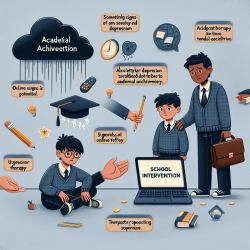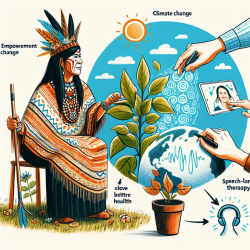Key Findings and Applications
One of the standout aspects of the research presented in this special issue is its focus on the educational system. Several articles explore how arts therapies can be integrated into school settings to support children and adolescents facing unique challenges. For example:
- Music Therapy for Refugee Children: Heynen et al. (2022) developed a specific music therapy intervention in the Netherlands for refugee children and adolescents. This program has shown promising results in helping these children cope with trauma and integrate into new educational environments.
- Artmaking in Education: Snir (2022) highlights the significance of artmaking as a core component of art therapy within Israeli schools, emphasizing its positive impact on behavioral problems and therapy outcomes.
- Open-Studio Interventions: Kelemen and Shamri-Zeevi (2022) describe a unique open-studio intervention aimed at facilitating identity development in teens recovering from mental health conditions.
- Remote Therapeutic Response: Korman-Hacohen et al. (2022) address the challenges brought about by the COVID-19 pandemic and the innovative ways arts therapists continued to support students remotely.
These studies underscore the versatility and effectiveness of arts therapies in educational settings, offering practitioners valuable insights and methodologies that can be adapted to their own work environments.
Arts Therapies for Special Needs
Another critical area covered in this special issue is the application of arts therapies for children and adolescents with special needs. The research highlights various approaches and their outcomes:
- Art Therapy in Foster Care: Bat-Or and Zusman-Bloch (2022) explore the subjective experiences of at-risk children in foster care who participated in an open-studio model, noting significant improvements in emotional regulation and social behavior.
- Art Therapy for Autism Spectrum Disorders (ASDs): Schweizer et al. (2022) report on a 15-session art therapy program designed to reduce difficulties in 'sense of self', 'emotion regulation', 'flexibility', and 'social behavior' in children with ASDs.
- Parent-Child Art Psychotherapy: Bitan and Regev (2022) investigate the effectiveness of parent-child art psychotherapy for children with ASDs, highlighting the positive impact on both children and their parents.
- Music Therapy in Pediatric Intensive Care: Cousin et al. (2022) describe the use of music therapy to manage anxiety and pain in pediatric intensive care units, providing a holistic approach to medical treatment.
These studies provide practitioners with evidence-based strategies to enhance their therapeutic interventions for children with special needs, emphasizing the importance of tailored approaches to meet individual requirements.
Diagnostic Potential of Arts Therapies
Beyond therapeutic applications, the special issue also explores the diagnostic potential of arts therapies. This is particularly relevant for children and adolescents, for whom verbal communication may not always be the most effective diagnostic tool:
- PPAT Drawing Assessment: Bat-Or et al. (2022) discuss the Person Picking an Apple from a Tree (PPAT) drawing assessment scale, which was used to evaluate the subjective experiences of preschoolers living in politically volatile areas.
- Joint Painting Procedure (JPG): Gavron et al. (2022) examine the relationship dynamics between adolescents with intellectual disabilities and their mothers through the Joint Painting Procedure, providing insights into family interactions and emotional bonds.
- Self-Figure Drawing for Abuse Identification: Jaroenkajornkij et al. (2022) present the use of self-figure drawing as a tool to identify different forms of child abuse, demonstrating its diagnostic efficacy.
These diagnostic methods offer practitioners additional tools to better understand and assess the emotional and psychological states of their young clients, thereby facilitating more targeted and effective interventions.
Encouraging Further Research
The research presented in this special issue not only provides valuable insights and practical applications but also highlights the need for further exploration in the field of arts therapies for children and adolescents. Practitioners are encouraged to delve deeper into these studies, replicate successful interventions, and contribute to the growing body of knowledge in this field.
By staying informed and integrating evidence-based practices into their work, practitioners can enhance their skills and create better outcomes for the children and adolescents they serve.
To read the original research paper, please follow this link: Special Issue: Arts Therapies with Children and Adolescents—Editorial.










